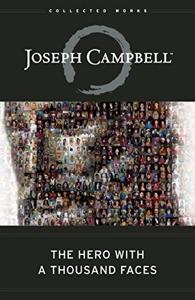
Want to learn the ideas in The Hero with a Thousand Faces better than ever? Read the world’s #1 book summary of The Hero with a Thousand Faces by Joseph Campbell here.
Read a brief 1-Page Summary or watch video summaries curated by our expert team. Note: this book guide is not affiliated with or endorsed by the publisher or author, and we always encourage you to purchase and read the full book.
Video Summaries of The Hero with a Thousand Faces
We’ve scoured the Internet for the very best videos on The Hero with a Thousand Faces, from high-quality videos summaries to interviews or commentary by Joseph Campbell.
1-Page Summary of The Hero with a Thousand Faces
Overall Summary
Joseph Campbell’s “The Hero with a Thousand Faces” is a non-fiction book about the common elements in world mythology. The author, a literature scholar and professor of mythology, talks about the hero’s journey. He also provides examples from various creation myths.
The author explores why there are so many similarities in myths from different cultures. He believes that this is due to the human mind, which has an Oedipus complex and infantile fears that have been analyzed by contemporary psychoanalysis. In addition, he draws connections between modern dreams and ancient myths, which share a common symbology. The author also discusses tragedy and comedy in myth as well as the role of heroes, gods, and other beings. Finally, he explains how all these things relate to each other.
In this first part, the author traces the path of the hero’s journey. It is found in many myths and stories. The main character goes on a quest that takes him into a mystical world full of danger and possible rewards. He meets gods, goddesses, monsters, etc., who test his will and ability to go through with his mission.
The hero’s journey concludes with the return from the mystical world. Campbell says that there are four possible outcomes: He can stay in the mystical realm and steal his boon, be rescued by a god, enjoy a peaceful journey home or give back to society as an enlightened being.
Part 2 of The Hero with a Thousand Faces is called “The Cosmogonic Cycle.” In this section, Campbell discusses the creation and destruction of worlds in mythology. He argues that these themes are based on human psychology, as well as basic universal principles. For example, myths talk about matter coming from nothingness, life developing from non-life, and divine power playing a key role in creating the universe. He goes on to examine how certain myths describe virgin births or immaculate conceptions.
The creation myth sets the foundation of many world myths. After God creates the earth, people continue to improve it. The hero’s journey follows a pattern of “separation—initiation—return”. Campbell discusses how heroes will take on different forms such as warriors, lovers, emperors and more. He also considers what happens when a hero dies in various traditions including Christianity and Hinduism. In conclusion he talks about how both humans and the universe pass through stages before they are absorbed back into the eternal silence from which all things come forth.
In this chapter, the author discusses how mythology is important in previous cultures and societies. He also explains that modern people don’t have a framework to deal with mystery or find spiritual maturity. Therefore, they should look within themselves for answers to those questions.
Prologue, Section 1: “Myth and Dream”
Joseph Campbell begins by observing commonalities in myths across the world. The similarities appear to be spontaneous, but psychoanalysis offers a potential reason for these similarities.
In the book, “The Hero with a Thousand Faces”, Joseph Campbell writes about an individual who dreams of killing his father and being embraced by his mother. The dream is actually the Oedipus myth retold in modern America. It’s also a common theme seen in nursery rhymes where children are fighting for their parents’ attention while competing against each other to get it.
Campbell then turns to the female dreamer, citing a woman who dreams of a fearsome white horse following her. She tells the horse to shave, and it comes out of a barbershop shaven with a man’s body but horse’s face and hooves. Campbell describes how these symbols frighten people but also entice them with their mysterious yet compelling implications. In the modern age, people can unlock these mysteries in the office of the psychoanalyst (which was new at that time), who would help them understand what those symbols meant for them personally.






